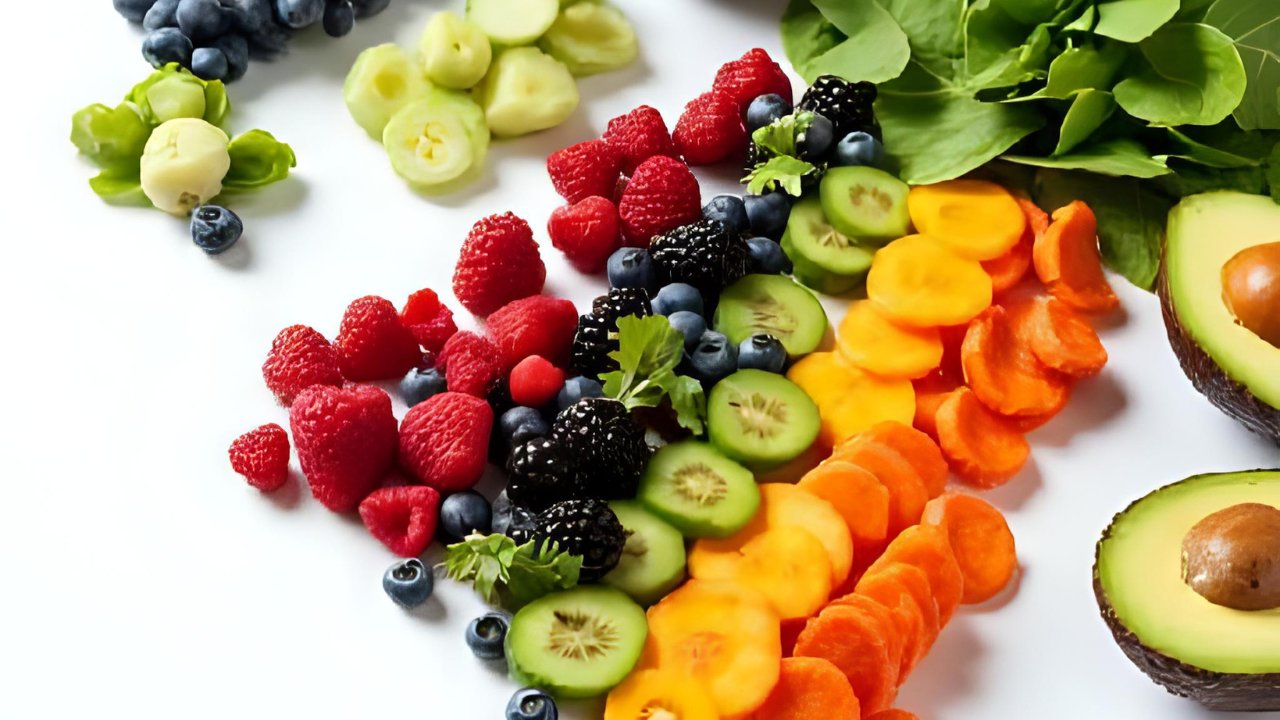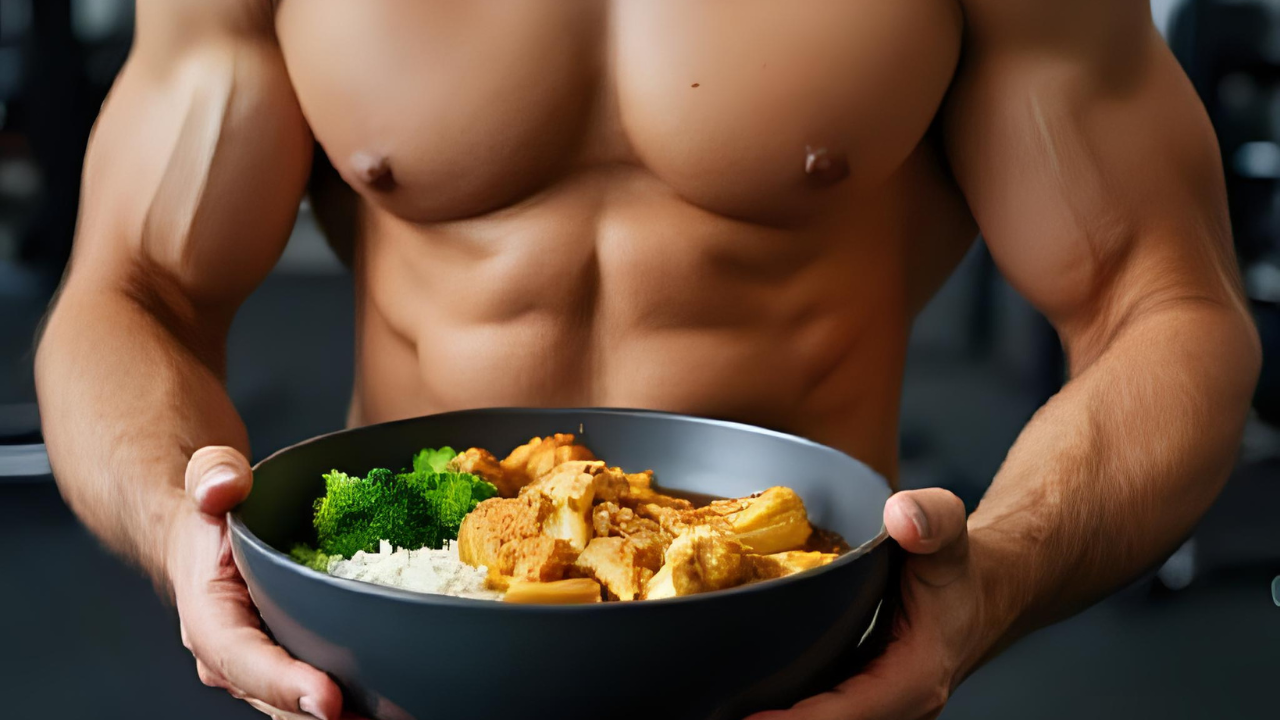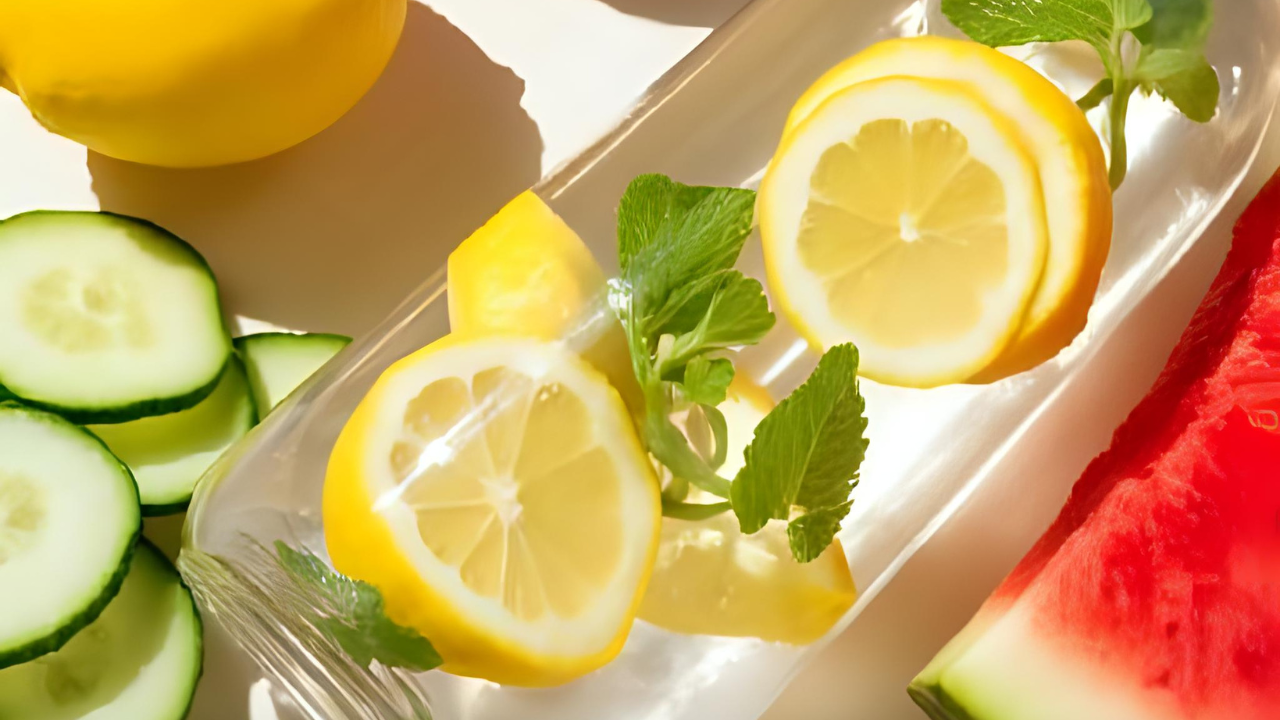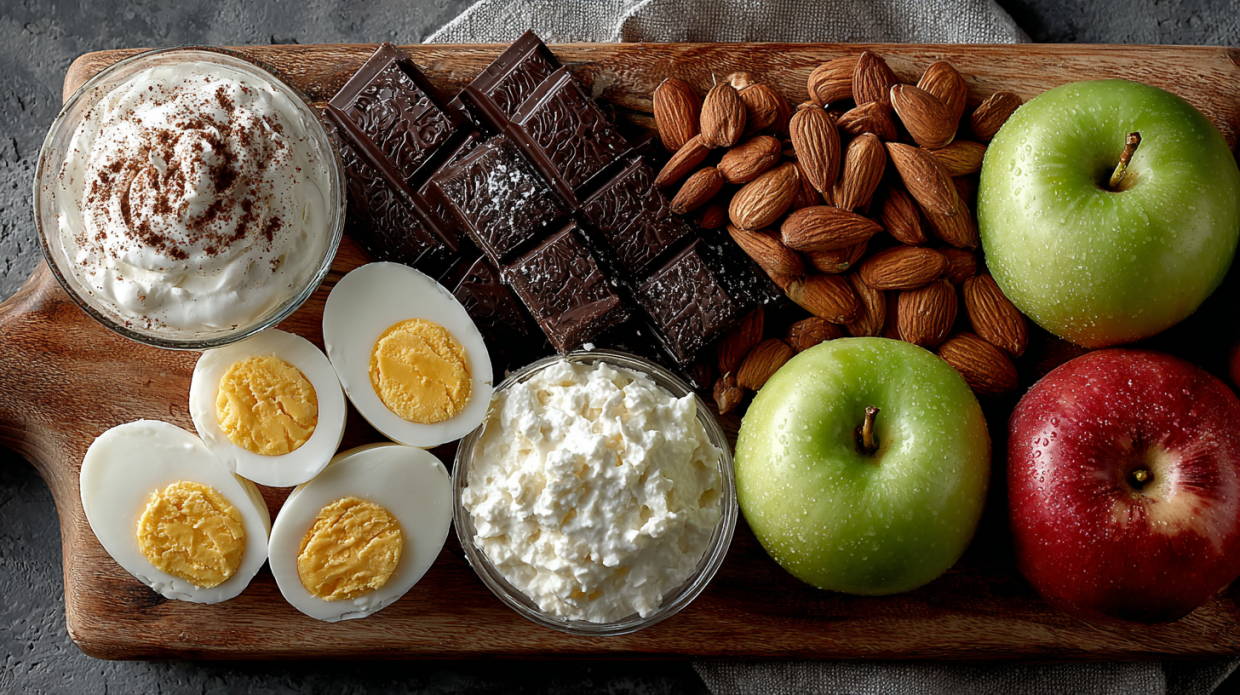It’s easy to focus on calories, carbs, and protein—but your body runs on the little things too. Micronutrients are the silent drivers behind metabolism, immunity, mood, and more.
The Power of Micronutrients
1) Eat the rainbow
- Different colors = different nutrients
- Aim for 3+ colors per meal
2) Don’t skip leafy greens
- Loaded with folate, calcium, magnesium
- Great for bones, brain, and detox
3) Rotate your choices
- Switch up your fruits, veggies, and grains
- Each food brings something unique
Recommended Foods
Spinach, kale, carrots, berries, pumpkin seeds, mushrooms, sea salt, and avocado are all nutrient-dense powerhouses.
Sample Diet Plan
| Breakfast Spinach and mushroom omelet with tomato slices |
| Morning Snack Apple with almond butter |
| Lunch Grilled tofu bowl with quinoa, peppers, and broccoli |
| Afternoon Snack Carrot sticks with guacamole |
| Dinner Baked cod with roasted beets and sweet potato |
Be Nourished
Micronutrients may be small, but their impact is massive. Treat your body like a system—and give it everything it needs to run right.
Muscles aren’t made in the gym—they’re built in the kitchen. Strength training tears them down. Food builds them back stronger. That’s the formula.
Muscle growth demands surplus calories—not just protein
Your post-workout meal matters just as much as your sets
Recovery foods reduce soreness and boost strength gains
Consistency beats “perfect” every single time
1) Hit your protein goal
0.8 to 1g per pound of bodyweight
Split across 3–5 meals
2) Don’t fear carbs
Carbs are fuel, not the enemy
Especially before and after training
3) Eat before bed
Slow-digesting casein (like cottage cheese)
Feeds muscles overnight
Recommended Foods
Chicken, salmon, oats, potatoes, eggs, cottage cheese, lentils, rice, and bananas are all muscle-building staples.
Sample Diet Plan
Breakfast
Oatmeal with banana and whey protein
Morning Snack
Boiled eggs and a slice of whole-grain toast
Lunch
Grilled chicken with sweet potato and green beans
Afternoon Snack
Greek yogurt with granola
Dinner
Beef stir-fry with rice and vegetables
Be Strong
You train like a beast—now eat like one. Lifting builds the frame, but food fills it in. Lift hard, eat smart, grow strong.
Hydration for Performance & Recovery
Water isn’t just for thirst—it fuels every cell, supports digestion, regulates temperature, and powers muscle recovery. Dehydration sneaks in fast and slows everything down.
If you feel tired, you may just be thirsty
1) Drink with intention
- Aim for half your body weight in ounces per day
- More if you’re active or sweating often
2) Add electrolytes
- Sodium, potassium, and magnesium
- Support muscle function and prevent cramps
3) Don’t rely on thirst alone
- Thirst lags behind hydration needs
- Sip steadily throughout the day
Recommended Foods
Cucumbers, watermelon, celery, oranges, and soups help hydrate through food. Electrolyte-rich drinks (unsweetened) also support hydration.
Sample Diet Plan
| Breakfast Smoothie with spinach, banana, and coconut water |
| Morning Snack Watermelon and a boiled egg |
| Lunch Chicken wrap with lettuce and cucumber |
| Afternoon Snack Celery sticks with peanut butter |
| Dinner Vegetable soup with grilled shrimp |
Be Hydrated
Water is your silent strength booster. Hydrate early, hydrate often, and your body will thank you in endurance, energy, and recovery.
Smart Snacking That Works
Snacks aren’t the enemy—mindless snacking is. The right snacks stabilize blood sugar, support your training, and stop you from overeating later.
Choose real food that works with your goals
1) Go for real ingredients
- Apple + peanut butter beats any granola bar
- Simple wins
2) Mind the portion
- Snack, don’t mini-meal
- A handful, not a plate
3) Time it right
- Between meals, pre-workout, post-workout
- Snacks should have a purpose
Recommended Foods
Greek yogurt, almonds, boiled eggs, cottage cheese, hummus, rice cakes, dark chocolate, and sliced fruit are all smart choices.
Sample Diet Plan
| Breakfast Overnight oats with chia seeds |
| Morning Snack Hard-boiled egg and almonds |
| Lunch Whole grain wrap with chicken and spinach |
| Afternoon Snack Greek yogurt with berries |
| Dinner Grilled tofu with roasted veggies |
Be Intentional
Snack with strategy, not boredom. Every bite is a choice—so choose the one that gets you closer to your goals.
Eating for Mental Clarity
What you eat affects how you think. Sharp focus, emotional balance, and even motivation are tied to your plate. Feed your brain wisely.
Omega-3s support brain structure and memory
Blood sugar balance keeps thoughts clear and steady
Certain vitamins boost mood and reduce anxiety
Your mental health starts with a fork, not just a feeling.
1) Choose clean protein
- Salmon, eggs, lean meats
- Fuel neurotransmitter production
2) Don’t skip healthy carbs
- Quinoa, berries, and sweet potatoes
- Your brain needs glucose—just the right kind
3) Micronutrient power
- Magnesium, B-vitamins, zinc
- Leafy greens and nuts deliver the goods
Recommended Foods
Walnuts, salmon, blueberries, spinach, eggs, dark chocolate (yes!), and avocado are brain-boosting staples.
Sample Diet Plan
| Breakfast Spinach omelet with a side of berries |
| Morning Snack Dark chocolate square and green tea |
| Lunch Grilled salmon with quinoa and greens |
| Afternoon Snack Greek yogurt with walnuts |
| Dinner Roasted chicken with mashed sweet potatoes and broccoli |
Be Clear
A focused mind starts with a nourished body. Clarity isn’t magic—it’s a meal plan. Eat like you mean it.
Mastering Intermittent Fasting
Not a diet, but a rhythm. Intermittent fasting gives your body time to rest, heal, and burn fat more efficiently. It’s not about eating less, but eating smarter.
Fasting improves insulin sensitivity and mental clarity
It’s simple: fewer meals, more discipline
Choose a schedule that fits your life—not the other way around
Fasting isn’t starvation—it’s strategy.
1) Start slow
- Try a 12:12 schedule and build from there
- Give your body time to adjust
2) Stay hydrated
- Water, herbal teas, black coffee
- Hydration is key to success
3) Break fast with intention
- Nutrient-rich, whole food meals
- Avoid breaking your fast with junk
Recommended Foods
When it’s time to eat, go for eggs, greens, lean meats, whole grains, and omega-3 fats. Keep it clean and focused.
Sample Diet Plan
| Eating Window: 12pm–8pm |
| Lunch Grilled chicken, avocado, and quinoa salad |
| Snack Hard-boiled egg and cucumber slices |
| Dinner Baked cod with sweet potato and steamed kale |
Be Strategic
Your body was built to fast. You just need to trust it—and give it what it needs when the time comes. Discipline builds freedom.
You had a stressful day. Or a boring one. Or maybe someone said something annoying and suddenly… you’re in front of the fridge, looking for comfort, not food.
Sound familiar?
Emotional eating is incredibly common—and incredibly sneaky. It doesn’t care if you just ate lunch. It doesn’t care about your goals. It wants relief. Fast. Usually in the form of sugar, carbs, or a crunchy snack that makes everything feel okay… for about five minutes.
But here’s the truth: you can outsmart it. And you don’t need superhuman willpower to do it. Just a little self-awareness and a few clever tricks.
1. Pause Before You Grab
The first step? Hit pause. Not stop—just pause.
Before diving into the snack drawer, ask:
-
Am I physically hungry?
-
When did I last eat?
-
What emotion am I feeling right now?
If you’re not sure, drink a glass of water and wait 10 minutes. If you’re still hungry, eat. If not, you just saved yourself from a guilt-fueled spiral.
🧠 Hunger is in the body. Cravings are in the brain.
2. Identify the Real Trigger
Emotional eating often comes from:
-
Stress
-
Boredom
-
Loneliness
-
Anger
-
Anxiety
-
Habit
Naming what you’re actually feeling takes the power away from the food. You’re not “weak.” You’re just human. And humans comfort themselves. The key is finding comfort that doesn’t sabotage your health.
3. Find a Non-Food Replacement
If you’re eating for emotional reasons, try replacing the habit, not just the food.
Here are a few feel-good substitutes:
-
Go for a short walk (even inside)
-
Call or text a friend
-
Journal for 5 minutes
-
Take a hot shower or bath
-
Watch a funny video
-
Do a quick breathing exercise or guided meditation
The goal isn’t to “fix” your emotions—it’s to soothe them without food.
4. Keep Trigger Foods Out of Sight (or Out of Reach)
You’re not going to grab cookies if they’re not in your house. But if they are there, at least make them inconvenient. Put snacks in high shelves, opaque containers, or harder-to-reach places.
Better yet, stock up on healthier alternatives:
-
Air-popped popcorn
-
Frozen grapes
-
Greek yogurt
-
Dark chocolate squares (in moderation)
-
Herbal tea (so underrated!)
Make the path of least resistance a little more nutritious.
5. Eat Regular, Balanced Meals
Skipping meals or undereating during the day is a direct ticket to nighttime binges. When you’re physically hungry and emotionally drained, willpower doesn’t stand a chance.
Build balanced meals with:
-
Protein
-
Fiber-rich carbs
-
Healthy fats
-
Colorful veggies
You’ll feel more stable, both physically and emotionally—which means fewer impulse cravings.
6. Forgive Yourself (Seriously)
You’re going to emotionally eat sometimes. Everyone does. The problem isn’t that it happened—it’s when guilt turns into shame, which turns into more eating.
Instead:
“Okay, that happened. I see why. What can I learn for next time?”
Self-compassion is more powerful than any diet rule. And it helps you bounce back faster.
Final Thoughts
You don’t need to “fix” emotional eating overnight. You just need to notice it, understand it, and have a few go-to strategies ready when it strikes.
Because you’re not actually hungry for cookies. You’re hungry for peace, comfort, and connection. And you deserve all of that—with or without the snacks.









